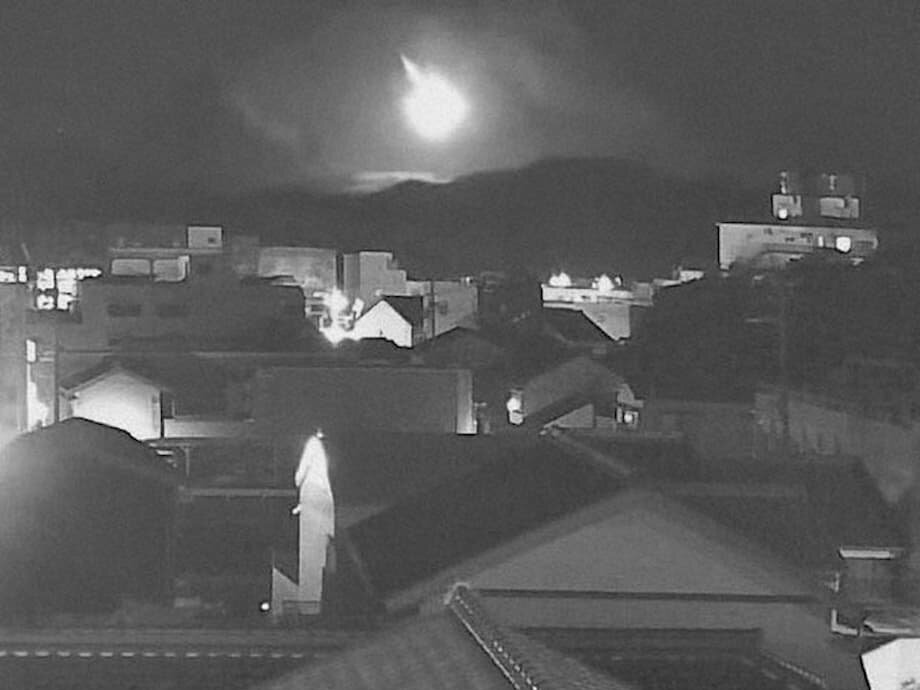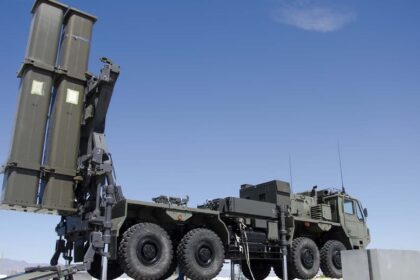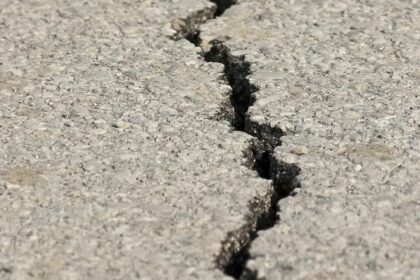A Dazzling Night: Fireball Meteor Lights Up Western Japan
Late on the night of August 19, 2025, residents across western Japan were treated to a rare and breathtaking celestial event. At precisely 11:08 p.m. local time, a brilliant fireball—an exceptionally bright meteor—streaked across the skies of Kyushu, Shikoku, and parts of the Kinki region, momentarily turning night into day. The spectacle, captured on cameras from airports, volcano livestreams, and countless dashcams, quickly became a viral sensation, sparking awe and curiosity both in Japan and around the world.
Eyewitnesses described the scene as otherworldly. In Miyazaki Prefecture, a driver recounted seeing a white light so intense that it illuminated houses as if it were daylight. Social media platforms were flooded with videos and photos, many showing the sky glowing in vivid blue and green hues as the fireball descended. The event was visible for hundreds of kilometers, with reports coming in from Kagoshima, Nagasaki, Fukuoka, and beyond.
What Exactly Was Seen in the Sky?
Experts quickly identified the phenomenon as a fireball, a term used for meteors that shine brighter than any of the planets in the night sky. According to Toshihisa Maeda, director of the Sendai Space Museum in Kagoshima Prefecture, “fireballs are caused by dust particles or asteroid fragments from outer space burning up as they enter Earth’s atmosphere.” These objects, known as meteoroids when in space, can range from tiny grains to small asteroids. When they enter the atmosphere at high speeds—often tens of kilometers per second—they compress the air in front of them, heating up and glowing brightly as they vaporize.
NASA notes that meteoroids become meteors (or shooting stars) as they burn up in the atmosphere. If any fragment survives the fiery descent and lands on Earth, it is called a meteorite. In this case, preliminary analysis suggests the fireball most likely disintegrated over the Pacific Ocean southeast of Kyushu, with no meteorite recovery reported.
Fireballs of this intensity are rare but not unheard of. According to NASA and the Japan Meteorological Agency, over 500,000 fireballs occur globally each year, but most go unnoticed as they fall over oceans or uninhabited regions. Events bright enough to be seen over populated areas, and to light up the night as vividly as this one, are considered once-in-a-year opportunities for any given location.
Scientific Details: Energy, Trajectory, and Impact
Data from United States Government sensors, archived by NASA’s Center for Near Earth Object Studies, estimated the fireball’s impact energy at about 1.6 kilotons of TNT equivalent. For comparison, the infamous Chelyabinsk meteor that exploded over Russia in 2013 released around 440 kilotons—making the Japanese event much smaller, but still significant. The fireball entered the atmosphere at an estimated velocity of 21 kilometers per second, at an angle of 58 degrees, and reached peak brightness near 30.9°N and 131.8°E, southeast of Kyushu. Its terminal altitude was calculated to be around 18 kilometers above the ocean.
The Kagoshima Regional Meteorological Observatory reported that monitoring equipment on Sakurajima volcano detected atmospheric vibrations generated by the fireball’s passage. Some witnesses even reported feeling the air vibrate, a testament to the energy released as the meteor disintegrated.
Eyewitness Accounts and Social Media Buzz
The fireball’s sudden appearance and intensity left a lasting impression on those who saw it. Social media quickly became a repository for firsthand accounts, videos, and photos. One witness in Miyazaki described the moment:
A white light I had never seen before came down from above, becoming so bright that I could clearly see the shapes of the houses around me. It seemed like daylight and I was very surprised.
Another observer in Fukuoka shared footage from the airport’s surveillance camera, showing the sky lit up in a brilliant blue. In Nagasaki, dashcams captured the fireball’s descent, adding to the growing collection of viral videos. The event’s visibility across such a wide area contributed to its rapid spread online, with hashtags related to the fireball trending on Japanese social media platforms.
Kazuyoshi Imamura, a curator at the Anan Science Center in Tokushima Prefecture, managed to film the incident from his home. He remarked that seeing a fireball of this brightness is a rare, perhaps once-in-a-year, opportunity. Despite the spectacle, local authorities and police confirmed that no injuries or damage were reported.
Fireballs, Bolides, and Meteor Showers: Understanding the Science
To the untrained eye, a fireball might seem like a random, isolated event. In reality, such phenomena are part of a larger cosmic process. Meteoroids—space rocks ranging from dust grains to small asteroids—are constantly entering Earth’s atmosphere. When they do so at high speed, friction with the air causes them to heat up and glow, creating the streaks of light we call meteors or shooting stars.
Fireballs are simply meteors that shine brighter than Venus, the brightest planet in the night sky. If a fireball explodes in the atmosphere, it is technically called a bolide. The terms are often used interchangeably, but bolides are typically associated with explosive fragmentation, sometimes producing sonic booms or airbursts.
The Perseid Meteor Shower Connection
The timing of the August 19 fireball coincided with the peak of the Perseid meteor shower, one of the most famous annual meteor showers. The Perseids are known for their fast, bright fireballs, caused by debris from Comet Swift-Tuttle burning up in Earth’s atmosphere. Just a week earlier, a rare meteoroid cluster was observed in Aomori Prefecture in northeastern Japan, where multiple meteors appeared almost simultaneously. While it is not confirmed that the August 19 fireball was part of the Perseids, the shower’s peak increases the likelihood of such spectacular events.
According to NASA, about 44 tonnes of meteoritic material falls to Earth every day, but almost all of it vaporizes in the atmosphere, leaving behind only bright trails. Meteor showers occur when Earth passes through the trail of debris left by a comet, and are usually named after the constellation from which the meteors appear to radiate.
How Rare Are Events Like This?
While meteors are common, fireballs of this brightness are rare for any given location. Most meteoroids burn up high in the atmosphere, unnoticed except by sensitive instruments. Only the largest or fastest objects produce fireballs bright enough to be seen over wide areas. According to NASA, objects causing fireball events can exceed one meter in size, though most are much smaller.
Fireballs of the scale seen over Japan on August 19 are expected globally a few times per year. The vast majority fall over oceans or remote regions, making visible events over populated areas both memorable and scientifically valuable. Larger fireballs, like the Chelyabinsk meteor in 2013, can cause significant damage, but such events are exceedingly rare.
Safety and Scientific Value
Despite the dramatic display, fireballs almost never pose a threat to people or infrastructure. The energy released is typically dissipated high in the atmosphere, and any surviving fragments (meteorites) are usually small and scattered. In this case, no injuries or property damage were reported, and no meteorite recovery has been confirmed.
For scientists, fireballs offer valuable data about the composition and behavior of meteoroids. By analyzing videos, sensor data, and eyewitness reports, researchers can estimate the object’s size, speed, trajectory, and even its origin in the solar system. Events like the August 19 fireball help improve our understanding of the small bodies that constantly interact with Earth.
Why Do We Find Fireballs So Fascinating?
There is something deeply compelling about seeing a fireball blaze across the night sky. For many, it is a reminder of our planet’s place in the cosmos and the dynamic processes that shape our solar system. The sudden transformation of night into day, the vivid colors, and the fleeting nature of the event all contribute to its allure.
Social media amplifies this fascination, allowing people to share their experiences and footage instantly. The August 19 fireball became a shared moment of wonder, uniting people across regions and backgrounds in a collective sense of awe. As one expert put it, such events are a natural result of cosmic processes, a brief but beautiful reminder of the universe’s ongoing activity.
In Summary
- A brilliant fireball meteor lit up the skies over western Japan on August 19, 2025, visible across Kyushu, Shikoku, and Kinki regions.
- The event occurred at 11:08 p.m. and was captured on numerous cameras, quickly going viral on social media.
- Experts identified the phenomenon as a fireball—an exceptionally bright meteor—likely caused by a meteoroid burning up in the atmosphere.
- Scientific analysis estimated the fireball’s energy at 1.6 kilotons of TNT, with no meteorite recovery or injuries reported.
- The timing coincided with the Perseid meteor shower, increasing the likelihood of such events.
- Fireballs of this brightness are rare for any given location, making the event a memorable spectacle for those who witnessed it.
- Such events pose little risk to people and provide valuable scientific data about meteoroids and their interaction with Earth’s atmosphere.












